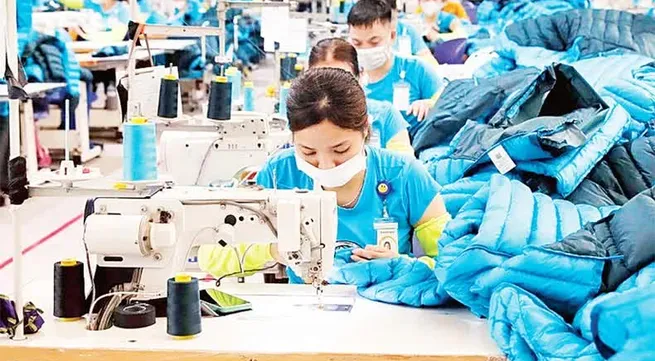Institutional reform, effective implementation of FTAs

Push from FTAs
Vietnam signed and is implementing 16 FTAs and is negotiating three others. According to the Ministry of Industry and Trade, participating in FTAs has created a positive impact on our country’s trade activities and investment attraction, especially new-generation FTAs.
Regarding the Comprehensive and Progressive Agreement for Trans-Pacific Partnership (CPTPP), the trade turnover between Vietnam and members of this agreement reached 104.5 billion USD in 2022, an increase of 14.3% compared to 2021 (Vietnam’s exports reached 53.6 billion USD, up 17.3% compared to 2021). In terms of markets, Vietnam’s export turnover to eight out of ten CPTPP members grew positively. The Brunei market in particular saw a sharp increase of 163%.
When it comes to the EU-Vietnam Free Trade Agreement (EVFTA), the trade revenue between Vietnam and European Union (EU) countries hit 62.24 billion USD in 2022, up 9.2% compared to 2021. Vietnam’s exports to the EU were posted at 46.8 billion USD, up 9.2% compared to 2021. In the first 11 months of 2023, the trade surplus to the EU was reported at more than 26.2 billion USD.
Thanks to the UK-Vietnam Free Trade Agreement (UKVFTA), the trade turnover between Vietnam and the UK reached 6.8 billion USD in 2022, up 3.3% compared to 2021. Of which, Vietnam’s export turnover was 6.1 billion USD, a rise of 5.2% compared to 2021. Vietnam’s import revenue from the UK was more than 771 million USD.
Despite the difficulties of the global economy and the UK economy, bilateral trade between Vietnam and the UK still gained more than 5.8 billion USD in the 11 months of 2023. So far, the UK has 550 direct investment projects in Vietnam with total registered capital of about 4.28 billion USD, ranking 15th among the 143 countries and territories with direct investment in Vietnam.
Notably, the rate of using CPTPP Certificates of Origin (C/O) of Vietnam’s key export products in 2022 continued to grow significantly compared to 2021, with an increase of 41.7% in the seafood sector, 51.7% in the footwear sector, 185.2% in garments and textiles, 140.1% in coffee, and 62% in fruit and vegetables.
“The general difficult context of the world economy and of many of Vietnam’s major trading partners has caused declines to export orders, but Vietnam’s total import-export turnover still reached about 685-690 billion USD, including about 355 billion USD of export revenue, and about 330 billion USD of import revenue. This result is attributed to the positive contributions from markets that have FTAs with Vietnam, especially the new- generation FTAs,” said Tran Thanh Hai, Deputy Director of the Import-Export Department under the Ministry of Industry and Trade.
Great pressure accompanied by opportunity
Marko Walde, Chief Representative of the German Industry and Commerce for Vietnam, Myanmar, Cambodia, and Laos (AHK), said: Although exports grow well, the proportion of Vietnamese goods in EU’s imports accounts for only about 2%. Regarding investment attraction, despite Vietnam’s efforts to simplify regulations on administrative procedures and licensing, German and European companies still see it a barrier, causing delays in the implementation of projects. Improving transparency and efficiency in these processes is important to promote trade and investment facilitation.
According to the Ministry of Industry and Trade, despite positive export growth to large FTA markets such as the EU, CPTPP, and the UK in recent times, Vietnam’s export proportion in these markets is relatively modest. In addition, the utilisation of preferential tariffs has not met expectations. For example, the utilisation of preferential tariffs in the CPTPP is about 5%, in the EVFTA is 26%, and in the UKVFTA is about 24%.
Foreign direct investment (FDI) enterprises still account for the majority of Vietnam’s export turnover of key export products. The number of Vietnamese businesses exporting to other markets remains modest. Many businesses have only participated in some stages of the supply chain with limited ability to meet and comply with quality, food hygiene and safety requirements and technical requirements, especially as many import markets have been increasingly raising technical standards and non-tariff barriers.
According to Professor Nguyen Mai, Chairman of the Association of Foreign Invested Enterprises, new-generation FTAs go beyond the content of conventional trade agreements, with wide and deep level of commitment and strict enforcement mechanism, including areas considered “non-traditional”. Therefore, to effectively implement FTAs, Vietnam should accelerate the progress of building and promulgating documents to implement FTA commitments, especially documents related to import and export activities, such as taxes, rules of origin, and trade defence measures. Furthermore, it is necessary to research and ratify international conventions and enforce related international labour standards in compliance with commitments in the CPTPP, EVFTA, and UKVFTA.
Experts emphasise that country’s competitiveness is determined by many factors, of which institutional quality and business environment are of primary importance. Experience from participating in and implementing World Trade Organization (WTO) commitments shows that it will be impossible to take advantage of opportunities and successfully deal with challenges when implementing FTAs without institution and policy reforms.





